Related Movies

Sanjuro (1962)
Toshiro Mifune swaggers and snarls to brilliant comic effect in Kurosawa's tightly paced, beautifully composed "Sanjuro." In this companion piece and sequel to "Yojimbo," jaded samurai Sanjuro helps an idealistic group of young warriors weed out their clan's evil influences, and in the process turns their image of a proper samurai on its ear.

The Other Boleyn Girl (2008)
A sumptuous and sensual tale of intrigue, romance and betrayal set against the backdrop of a defining moment in European history: two beautiful sisters, Anne and Mary Boleyn, driven by their family's blind ambition, compete for the love of the handsome and passionate King Henry VIII.

After the Rain (2000)
A group of travelers is stranded in a small country inn when the river floods during heavy rains. As the bad weather continues, tensions rise amongst the trapped travelers.

The Ambitious (1970)
The story of Ryoma Sakamoto, considered to be the architect behind the downfall of the Tokugawa shogunate. He was considered an outlaw by his own clan, hunted by his government, and was despised by supporters of the Shogun as well as the Loyalists for desiring the opening of Japan to the West in order to learn its technology, in the hopes of one day defeating the West with a modern army and navy.

The Revenge of Yukinojo, Part 2: Dance of Revenge (1954)
The second part of an entertaining historical drama depicting the eventful story of the revenge of an actor with a strange fate, with a variety of characters and exciting developments.
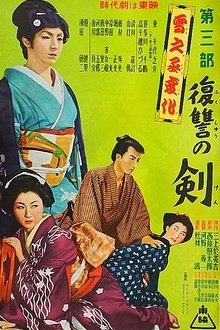
The Revenge of Yukinojo, Part 3: Sword of Revenge (1954)
The final, third part of an entertaining historical drama depicting the eventful story of the revenge of an actor with a strange fate, with a variety of characters and exciting developments.

Samurai Fury (2025)
Set in war-torn 15th century Kyoto, on the eve of the Onin War, the movie centers on a band of outlaws led by Hyoe, a scoundrel whose lethal sword skills place him at the tip of the spear in a deadly uprising against the corrupt Shogunate and its army, led by former friend-turned-archrival Doken.

Hirado Pirates (1955)
In the 9th year of the Tempo era, after a long sea voyage, Moritaya Seizo returned to Hirado, who earned huge amounts of gold by piracy. Along the way, he picked up Ichinojo Kaneko, a Ronin who survived the disaster at sea. Seizo and Orin, the daughter of merchant Yohei, are in love with each other and want to get married. However, Kashiwakura Gaiki, the samurai of the domain, wants to kill Seizo for the sake of his son Shozaburo, who is in love with Arin, and Kurando Matsuura, the owner of the castle, wants to seize all the gold for himself...

Goblin's Highway (1957)
Gombei is Nameless, a wanderer who is skilled with a sword and has a great sense of humor, who tries to save the good people of the Kiso Valley, he gets into a fight with local bad bosses who behave badly on the Tokaido road in the Kiso Valley.

Aoi Secret Book (1958)
A Golden Age drama depicting the exploits of passionate patriot Uotaro Toge in the midst of a mysterious standoff over the Secret Book of Aoi, which will determine the rise or fall of the 350,000-koku Mito clan, and showcasing swashbuckling swordsmanship.
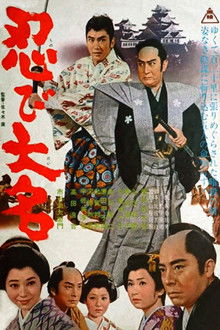
The Lord's spy (1964)
Maeda Tsunanori, the lord of Kaga Domain, had two young princes - Katsumaru, the son of his legitimate wife, who died, and Yasunosuke, the son of his concubine. However, Katsumaru suddenly lost his mind and appealed to the shogunate to hand over the reins of the family Yasunosuke, but the request was rejected. Vassal Osawa Kuranojo suspects that this is the work of Ishikawa Torajiro, a swordsman from the Katsumaru group, and begins an investigation.

Kanbei's Bargain Sale (1958)
Wandering swordsman Kanbei, parading through town with a sign that reads "Seeking fights, selling my life cheap." One day, he receives a request from the star of the daughter's kabuki, Nakamura Tsurukichi. However, unable to bear seeing a face reminiscent of his first love, he disappears as soon as the task is completed. But later, Tsurukichi returns to ask Kanbei for help once again...
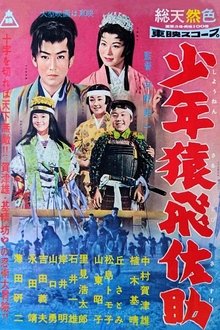
Kid Magician Sasuke (1958)
In this exciting story, Sasuke Sarutobi, known as the bravest child in the world, fulfills the will of his father, growing up strong and correct, and with great success using his ninjutsu skills becomes a servant of Yukimura Sanada.
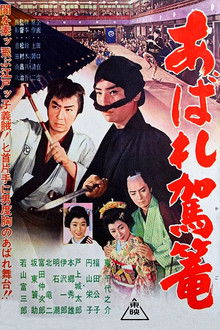
Wild Palanquin (1960)
Shinsuke Inaba, a thief who snuck into the Kishu family residence in Edo. He was almost discovered by a patrol, but he is helped by Kajio, a woman who holds the position of a junior maid of honor. She was later reprimanded and moved into her family's candle shop. One day, she meets the popular actor Nakazo Nakamura, and is surprised by his exact resemblance to Shinsuke…

The Adventures of Jirokichi: A thousand coins (1960)
The film adaptation of the novel "Three Little Rats" by Tatsuro Jinde. In this fascinating story, the rebellious Jirokichi and three men, united by a sense of justice and love, confront an evil merchant and an official who fills his pockets with gold, and eventually expose his crimes in order to avenge the death of one of his comrades.

The Travel notes of Choshichiro - Peregrine Goblin (1959)
The second film about the adventures of Chosichiro Matsudaira. This time he fights against conspirators whose goal is to replace the 4th Shogun Ietsuna during his visit to Nikko Shrine.
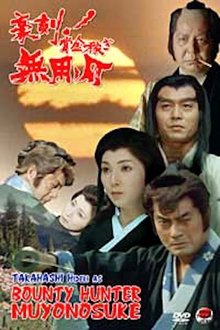
Bounty Hunter Muyonosuke (1990)
Takahashi Hideki stars as Muyonosuke, the one-eyed ronin who makes his living as a bounty hunter who is on a never-ending quest to find the man who murdered his father. The usually aloof Muyonosuke, who never would pause to help the common man winds up befriending an orphan boy and a mysterious woman, and getting involved in a feud between two families, but finds out there is a high power behind the curtain who pulls their strings.

Lady Sings the Blues (1972)
Chronicles the rise and fall of legendary blues singer Billie Holiday, beginning with her traumatic youth. The story depicts her early attempts at a singing career and her eventual rise to stardom, as well as her difficult relationship with Louis McKay, her boyfriend and manager. Casting a shadow over even Holiday's brightest moments is the vocalist's severe drug addiction, which threatens to end both her career and her life.
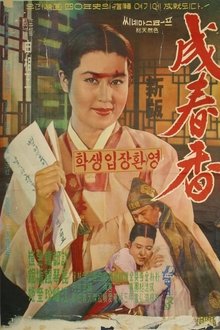
Seong Chun-hyang (1961)
Chun-hyang, the only daughter of an old gisaeng named Wolmae, falls in love with Lee Mong-nyong and promises to marry him. But Lee leaves for Seoul with his father who's an aristocrat, and the new governor, Byeon Hakdo, covets Chun-hyang because she is the most beautiful girl in town. When Chun-hyang rejects his order to serve him at night, Governor Byeon sends her to jail. In the mean time, Lee passes the state exam and becomes a special undercover agent of the king. He comes back to where Chun-hyang lives to save her and punishes Governor Byeon.
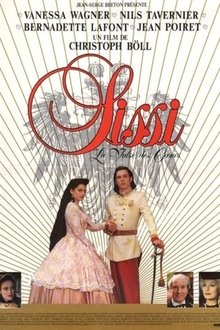
Sisi/Last Minute (1991)
The immature young ruler of the Austro-Hungarian Empire, Franz Joseph, was extremely shy around women but (according to this film) was constantly being propositioned, lewdly or otherwise, by ambitious courtesans. When he was finally married to his Empress, the teen-aged Bavarian princess Sisi (Elizabeth), it seems that his relief knew no bounds, for he was now sure that he would never have to think about sex ever again. According to the filmmakers, this is the true history of that marriage. This story is a complete reversal of the romantic legend depicted in the popular 1955 film Sissi, which helped brighten the emerging stardom of Romy Schneider.